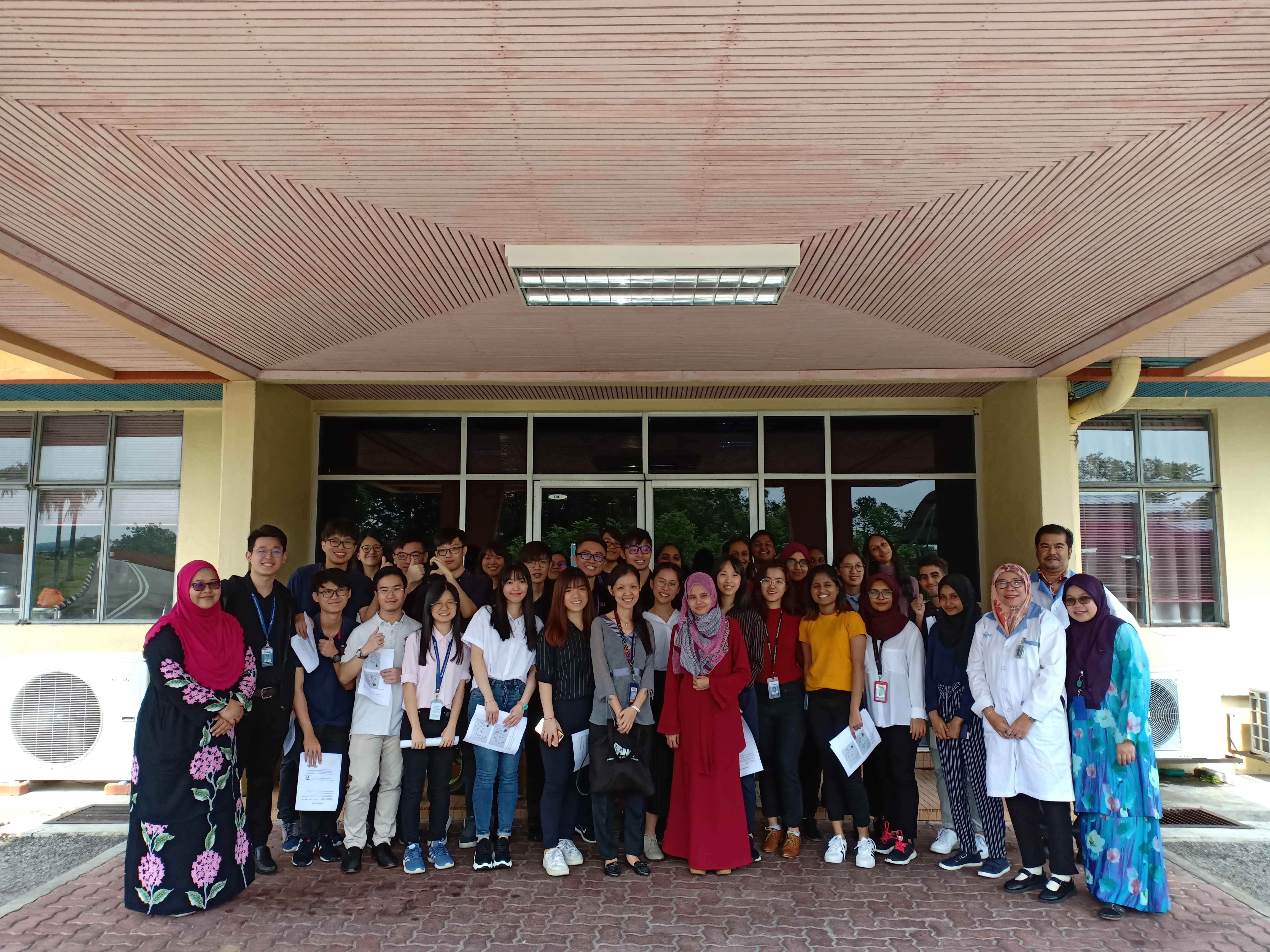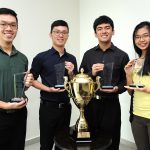14 November 2019 – Semester 3 Biomedical Science students of the International Medical University who were enrolled in the Radiobiology elective module, had the opportunity to visit Nuklear Malaysia (Malaysian Nuclear Agency) in Bangi, Selangor. At the Agency, the students were guided through several sections including:
| Facility | Activity |
|---|---|
| Plant Culture Laboratory, one of the facilities in the Gamma Greenhouse. | At this facility, plant seedlings are produced via in vitro techniques. Students were offered the opportunity to observe tissue culture of the MB2 pineapple, which was known to be extremely sweet but difficult to procure. However, using in vitro techniques, farmers would be able to produce large quantities of whole pineapple plants within a short period of time. |
| Gamma Greenhouse, a facility containing a radiation source, Caesium-137, at its centre. | This facility’s primary purpose is to induce mutation in plants and other samples placed within it by gamma radiation. |
| Division of Medical Technologies (Bahagian Teknologi Perubatan) | The students were shown several biomedical research techniques, including the injection of a radio labelled product into a rat to test the efficacy of the therapeutic method. Researchers also demonstrated the process of anaesthetising a rat before injecting it with samarium, which has the therapeutic effect of reducing metastatic bone pain. Post-injection, the students were able visualise the in vivo radioisotope distribution using a gamma camera. The researchers generously provided in-depth explanation regarding the processes and interpretation of results from the experiment. |
| Bio-dosimetry lab | Blood samples obtained from individuals exposed to radiation are analysed. The samples would first be stained before being viewed under a light or a semi-automated microscope to observe chromosomal abnormalities. There is a stringent criterion to be met to ensure accurate results and prevent misdiagnosis, whereby approximately 500 to 1000 cells have to be present within the prepared slide, and cells with less than 46 chromosomes were rejected. |

Inside the Microbiology Laboratory, diagnostic kits produced within are tested for their sterility and also the presence of pyrogens. The final stop was at the Animal Housing Facility, where experimental animals are kept in individually-ventilated cages and maintained within optimal parameters. Overall, the trip was a truly memorable experience whereby students had the opportunity to view, first-hand, the cutting-edge diagnostic or experimental techniques taught in lectures and their innovative applications in medical sciences.
Written by Ho Seck How, BM1/18 student.









